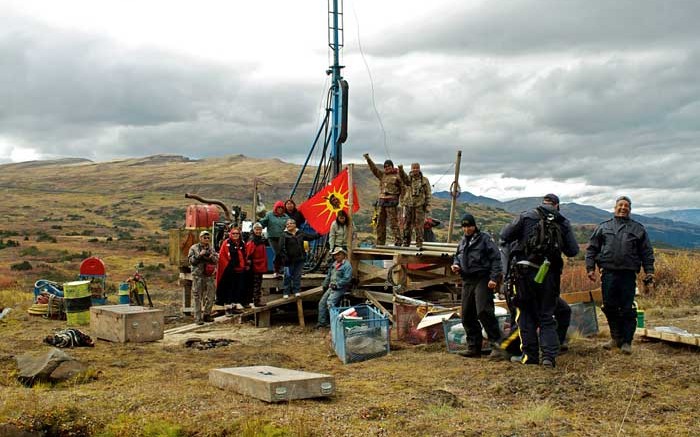One of the more contentious showdowns in B.C. in recent years between a First Nation and a mine developer has been neatly diffused by the B.C. government, which has swept in with $18.3 million to buy Fortune Minerals’ Arctos high-quality anthracite coal project, 100 km southeast of Iskut in northwestern B.C.
The project, formerly named Mount Klappan, comprises 61 coal licences that Fortune had held since 2002, as it worked towards developing an open-pit mine. South Korean steel giant Posco bought a 20% interest in the project from Fortune in 2011 for $30 million, so that the project was most recently held by the two companies on an 80-20 basis.
However, Arctos’ location is part of a region the local Tahltan First Nation call the Sacred Headwaters, which is considered a significant cultural heritage to the group, as well as a hunting ground and headwater that feeds three major salmon-bearing rivers.
The Tahltan flat out rejected the idea of developing a mine at the site, with the conflict coming to a boil in September 2013, when Fortune stopped developing the site owing to its occupation by local First Nations members. Energy and Mines Minister Bill Bennett intervened to win a peace between the groups, but the project has sat in limbo ever since.
Then within hours of the landmark Supreme Court of Canada decision in August 2014 that the small Tsilhqot’in First Nation holds aboriginal title over 1,750 sq. km of what had formerly been Crown Land in central B.C., the Tahltan put everyone on notice that it too would seek the court’s recognition of its aboriginal title over the area containing Arctos — a legal move largely to be undertaken to stop the Arctos project.
Or, as the B.C. government delicately described the situation: “[Fortune and Posco’s] development schedule was moving more quickly than discussions with the Tahltan Nation, preventing progress … on a shared vision for the entire area.”
In a bit of a twist, the B.C. government is buying the asset through its B.C. Railway Co., which can acquire coal mines and associated land under the BC Railway Act. BC Rail is using its cash reserves to acquire the licences as an agent of the provincial government, which notes that this “allows the transaction to take place with no impact to the government’s current fiscal plan.”
While oftentimes in these scenarios, government-bought land becomes a park that’s off limits to mining, in this case the government keeps the door to development slightly ajar by setting a 10-year cooling-off period, after which developing the high-quality asset can be reconsidered, and Fortune and Posco can repurchase the asset at its original price.
“Developing a shared vision for responsible management of the Klappan is critically important to the Tahltan Nation, the Province and to industry,” Bennett said. “This acquisition provides certainty and solves a timing problem that was preventing progress on these discussions.”
The Tahltan Nation notes that despite its consistent opposition over the years, the Klappan region has “always been a target for major resource development projects, because of its large anthracite coal deposits,” and that in 2012 Shell relinquished its coal bed methane rights in the Klappan after strong opposition.
Still, the Tahltan Central Council underscores that it supports “appropriate and responsible” development in Tahltan territory, pointing to its 2014 investment into AltaGas’ Volcano Creek renewable energy project and the April 2015 Tahltan Nation vote to accept an agreement with Imperial Metals’ Red Chris copper-gold mine.
Fortune Minerals, meanwhile, is happy to take its share of the money — split fifty-fifty — and focus its energy on its other assets: its Revenue silver mine in Colorado, which is ramping up; and its NICO project in the Northwest Territories and Saskatchewan, which is permitted and positioned to become a vertically integrated, North American source of battery-grade cobalt sulphate.



Be the first to comment on "Editorial: BC gov’t solves Arctos conundrum"